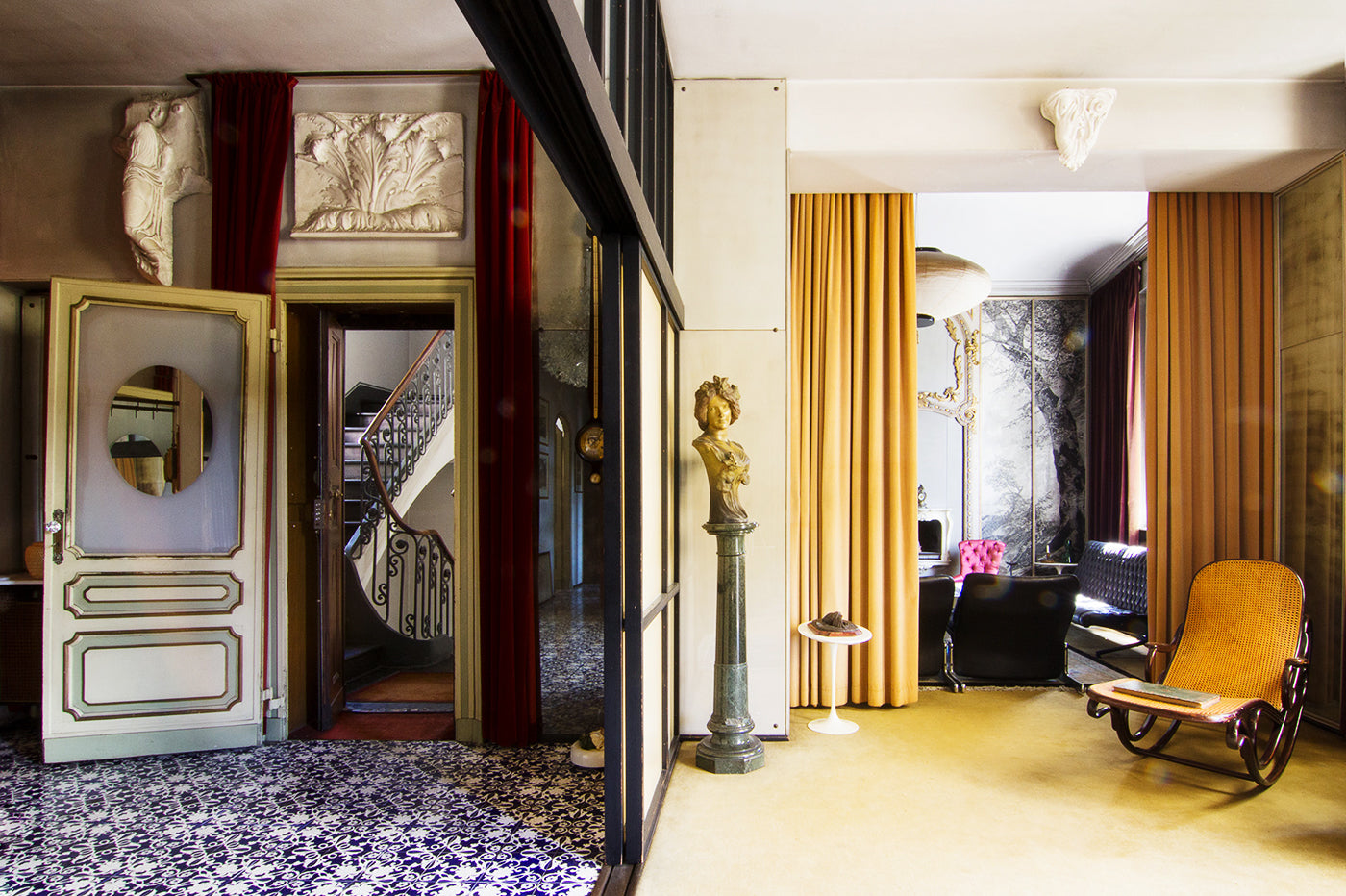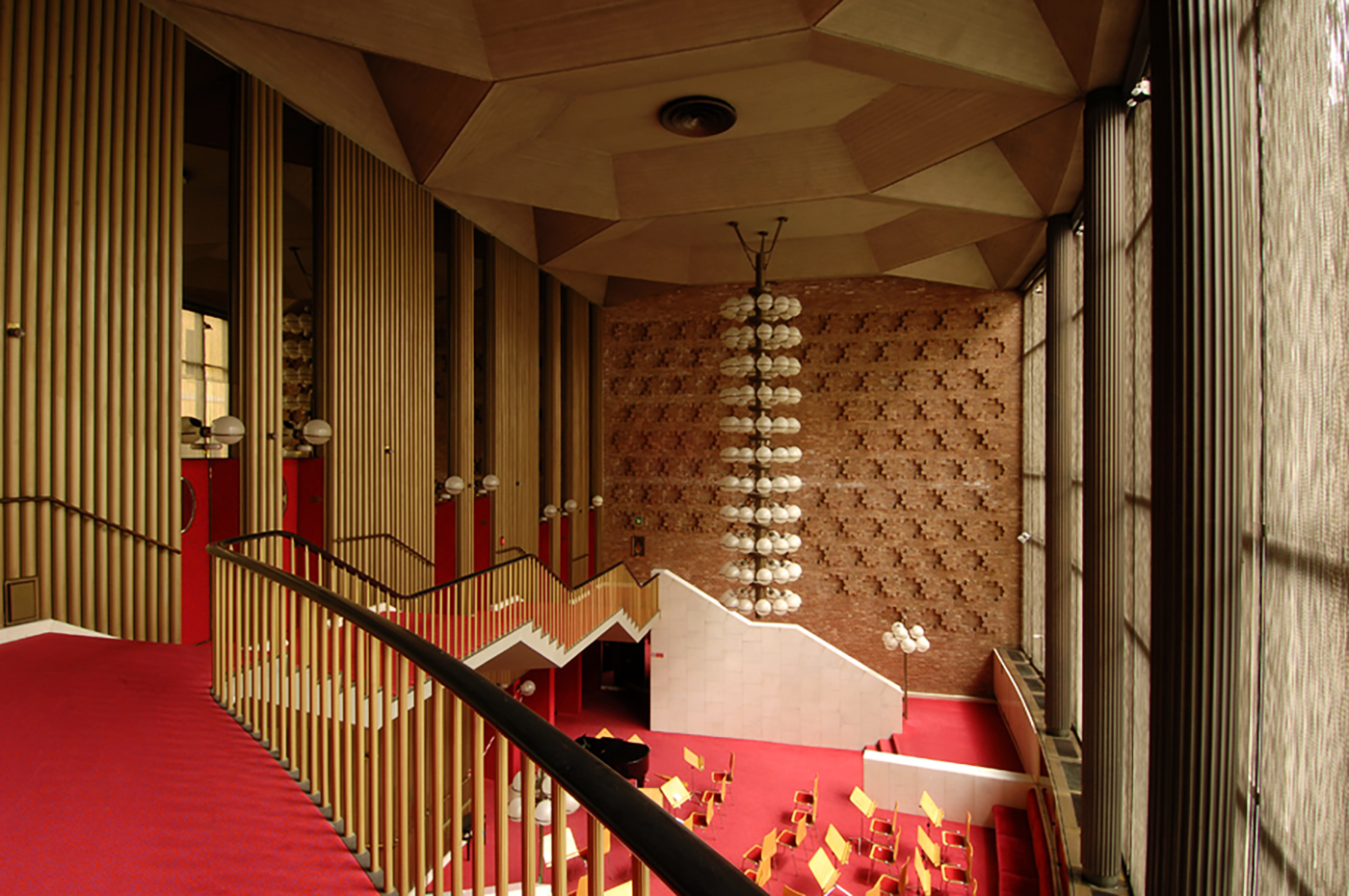Your Cart is Empty
Buy a book, plant a tree.
A toast to the versatile and flamboyantly prolific Italian artist on what would have been his birthday

Carlo Mollino was a renaissance man whose oeuvre embraced the cultural and technological world of his time thanks to his unadulterated love of life and innovation. Born on May 6, 1905, he went on to become a prominent Italian architect and designer, renowned especially for pursuing an aesthetic appeal in all aspects of his life.

His work in the fields of interiors and architecture began in the late 1930s and spanned the 1940s into the 1950s, later devoting himself to photography. But the interior design was the essential medium for Mollino’s creativity. Be it in the organic interiors of private residences or in a distinctive approach to furniture design, his work delivers maximum impact. His first interior design venture began in 1936 with Casa Miller. This private apartment, designed for his own personal use, was the first in a series that illustrates Mollino’s style, which crystallized into an organic yet bizarre, eclectic modernism.
In Casa Miller, rococo mirrors, classicistic clocks, and an ancient horse head sculpture are complemented with his own ingenious designs; his sliding ceiling light, a mirror shaped as ancient Venus, and, primarily, the airy system of suspended draperies create a dreamy space. Mollino used the apartment as a lavish set for his photographic interests.
In the following two assignments—the Devalle I and II apartments from 1939 and 1940—the architect played a surprising game with the interior, which verges on rococo and psychedelia. Mirrors, excessively decorated upholstered furniture and a bedroom covered with pink satin serve as evidence of his supreme interior surrealism. His pioneering eclectic approach hints at postmodernism, well before this movement was actually named. With the following Minola (1944–1946), Rivetti (1949), and Orengo (1949) apartments and their morphology, Mollino showcases aesthetics that ultimately inform his designs throughout the 1950s.

The furniture pieces, exclusively designed for the individual apartments, represent the acme of Mollino’s design production. The organic shapes of wood, produced informal experiments by the Apelli and Varesio workshop in Turin, highlight the unusual sculptural quality of his work. In the 1950s, the designer worked on several other assignments: furniture for the Musa exhibition at the Brooklyn Museum in New York, the interior for the Casa Editrice Lattes publishing house (1951–1952), and the RAI Auditorium. He also furnished the design of the Casa del Sole chalet in Cervinia with furniture pieces inspired by traditional Alpine culture.
One of Mollino’s last interior designs includes Casa Mollino—another private apartment for his creative endeavors—which he gradually worked on until 1968. He never actually lived in the apartment, its rooms designed according to rich symbolism and mythology.

Today, the apartment is owned by Fulvio Ferrari, an Italian curator, and collector who wrote several books on Mollino with his son Napoleone. He opened the apartment to the public to give testimony to Mollino’s legacy. Ferraris brought his work to light for a contemporary audience, giving collectors and artists a fresh source of inspiration. Every year, many famous artists such as Patti Smith, Robert Wilson, and Jürgen Teller visit Casa Mollino to see the masterful creativity of the unorthodox architect and designer.
The most challenging assignments awaited Mollino toward the close of his life. The Turin Chamber of Commerce was built from 1964 to 1972 in collaboration with Carlo Graffi, A. Galardi, and A. Migliassi. The Brutalist and futuristic expression of the building, which bears a geometrical grid of rounded windows, lacks characteristics featured by Mollino in his works from the 1950s. On the contrary, the monumental extension of the Teatro Regio in Turin, finished in 1973, gives a more typical impression.

The brick organic mass of the Teatro Regio and its large glazed surfaces refer back to the radical architecture of Guarino Guarini once again. The interior of the lobby, with a geometric crystalline ceiling and brick reliefs, contrasts with the fluid space of the auditorium. Collaborating with Carlo Graffi and Adolfo and Marco Zavelani Rossi, Mollino achieved an unusual dynamic composition. The auditorium, constructed in the shape of an egg, is topped with spectacular lighting by Gino Sarfatti.
Photography was Mollino’s indispensable medium, into which he channeled his desires, interests, and modern visions from the start of his career. Not only did the designer and architect take photos of his interior designs and architectural implementations, but he also focused on shots of flying, skiing, and women—many of whom served as significant muses. Most impressive among his many photo series, artistically speaking, are the nudes, which he started to shoot in the second half of the 1950s.

Mollino took photos of his models from the lens of both an art and fashion photographer. The carefully selected settings, usually in his own apartment or Villa Zaira, another space he bought and renovated in the early 1960s, became dreamy backdrops for his models. He always styled his own shoots, choosing clothes to match the visually impressive environments of his own designs. The results represent delicate and sensual nudes that reflect the artist’s prolific catalog and hedonistic nature. He took photos and later color Polaroids of nudes in complete secrecy for more than 20 years.
Today the Turinese architect, designer, photographer, pilot, and race driver is regarded as one of the most fascinating creative minds of the last century. He passed away in his native Turin in 1973, aged 68. Design and architecture were given completely new dimensions through his endless creative passion and love for life. Mollino was a designer all his own.
Read more of Carlo Mollino's legacy alongside some of last century's most influential designers in Inside Utopia.